Michigan vegetable crop report – May 3, 2023
This is the kickoff to our weekly in-season vegetable newsletter.

Weather
Watch Jeff Andresen’s weather update.
The forecast calls for:
- Cloudy, windy and cool with rain showers possible to the east Wednesday, May 3.
- Variably cloudy and warmer Thursday and Friday, May 4 and 5. Scattered light rain possible to the north and west, especially on Friday. Mostly dry to the south and east..
- Fair, dry and warmer this weekend. Showers possible again by Monday.
- High temperatures in the upper 40s to mid-50s Wednesday warming to the 50s to 60s by Friday, and 60s to 70s by Sunday. Low temperatures in the low and mid-30s Thursday morning, with some scattered frost possible. Lows warming to the 40s Friday through this weekend.
- Medium range guidance suggests a major transition back to warmer than normal temperatures with near to below normal precipitation totals.
- New long lead outlooks the summer call for warmer than normal mean temperatures and for normal to above normal precipitation totals.
Changes for soil sample submissions
After a three-month break, Michigan State University Extension is pleased to announce the launch of a new soil testing program for Michigan residents made possible through a partnership with A&L Great Lakes Laboratories, Inc. (A&L). Home gardeners and commercial clients may once again purchase soil sample bags and mailers through MSU Extension and receive recommendations directly from MSU Extension. A&L will analyze soil samples and send results to MSU Extension. MSU Extension staff will generate MSU recommendations and send those directly to the client. All MSU recommendations utilize the latest research and follow state laws and guidelines, including Generally Accepted Agricultural Management Practices (GAAMPs), enabling farms to stay within the provisions of the Michigan Right to Farm Act.
Commercial soil sample bags are appropriate for wildlife food plots as well as farm, landscape, nursery, athletic field and other commercial operations. Recommendations will be given at farm-scale (e.g., pounds per acre) and commercial clients are supported by MSU Extension educators specializing in particular crops. Commercial soil sample bags can only be purchased in person at MSU Extension offices. The cost for the commercial sample bag is $18 and does not include shipping costs to the lab for analysis.
Preemergence and burndown herbicides
With the upcoming warm and dry weather through May, certain preemergence herbicides may require irrigation to be activated (for example, pendimethalin, ethalfluralin, napropamide, bensulide, etc.). Read your pesticide label carefully to determine any requirements for watering in your preemergence herbicide based on crop and soil-type.
Bolting in spring vegetables
Periodic freezes and a prolonged period of cool temperatures in the spring will give biennial crops and winter/spring annual vegetable crops an accumulation of several hours in their vernalization range. This may fully or partially vernalize some planting to the point where they bolt later this spring and summer.
Transplanted sweet onion, leeks, Brassica and celeriac/celery that are older, larger or earlier-maturing varieties can be susceptible to these conditions. The direct-seeded crops most at threat are beets, chard, spinach, lettuces, radishes and turnips because of their ability to vernalize as seed with short vernalizing times of one to four weeks for most of them.
Seeded carrots, parsnips, storage onions and fall-transplanted shallots are not as likely to bolt from cold spring temperatures because of their larger juvenile plant size requirement and longer vernalizing times.
You can read more in the MSU Extension article, “Bolting in spring vegetables.”
Seedcorn maggot
Soils are cool and degree day models predicted peak flight of seedcorn maggot occurred in the last few weeks, or is occurring now. Seedcorn maggot is a frustrating fly whose maggot babies can feed on germinating seeds to reduce stands. It is a bit different than other pests, as it is not attracted to a specific crop. Instead, females lay eggs in soils with freshly decaying organic matter, such as recently incorporated cover crops, manure or composts. Incorporating these as far in advance of planting as possible may be helpful; this avoids making soils super attractive to egglaying females at planting time. Past research showed that risk is greatly reduced once soil temperatures at a 4-inch depth consistently hit 70 degrees Fahrenheit. Seed treatments including spinosad, thiamethoxam and clothianidin are effective in conventional crops. Learn more about seedcorn maggot.
Crop updates
Cover crops are being terminated, burndown herbicides applied, and some soil work is taking place as conditions allow, with plastic laying starting over the last two weeks.
Asparagus
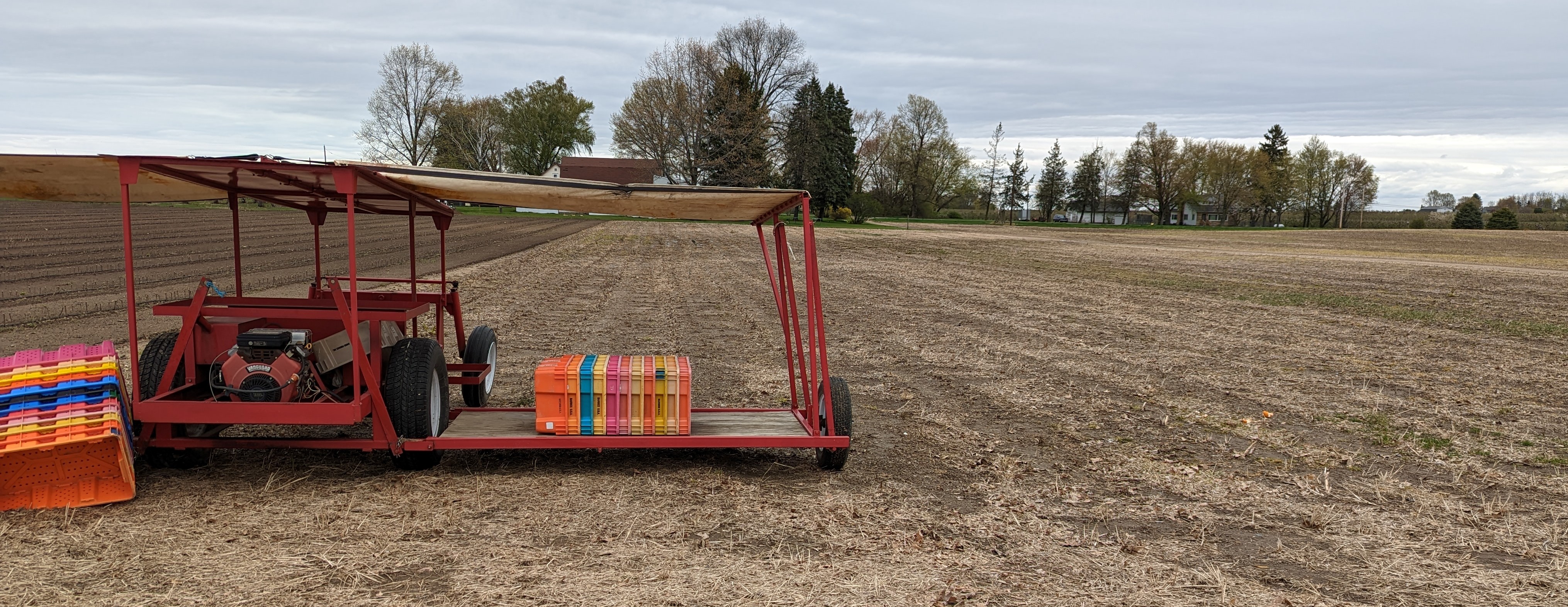
Fields were mowed and waiting for harvest late last week, with emergence expected in Hart, Michigan, early this week, based on a weather model developed by the Brainard lab. Emergence is defined as occurring when at least 25% of crowns have a spear 1-inch or taller. The model predicts this event based on soil temperatures at a 4-inch depth. The Brainard lab has been out and about digging around this spring to further validate the model.
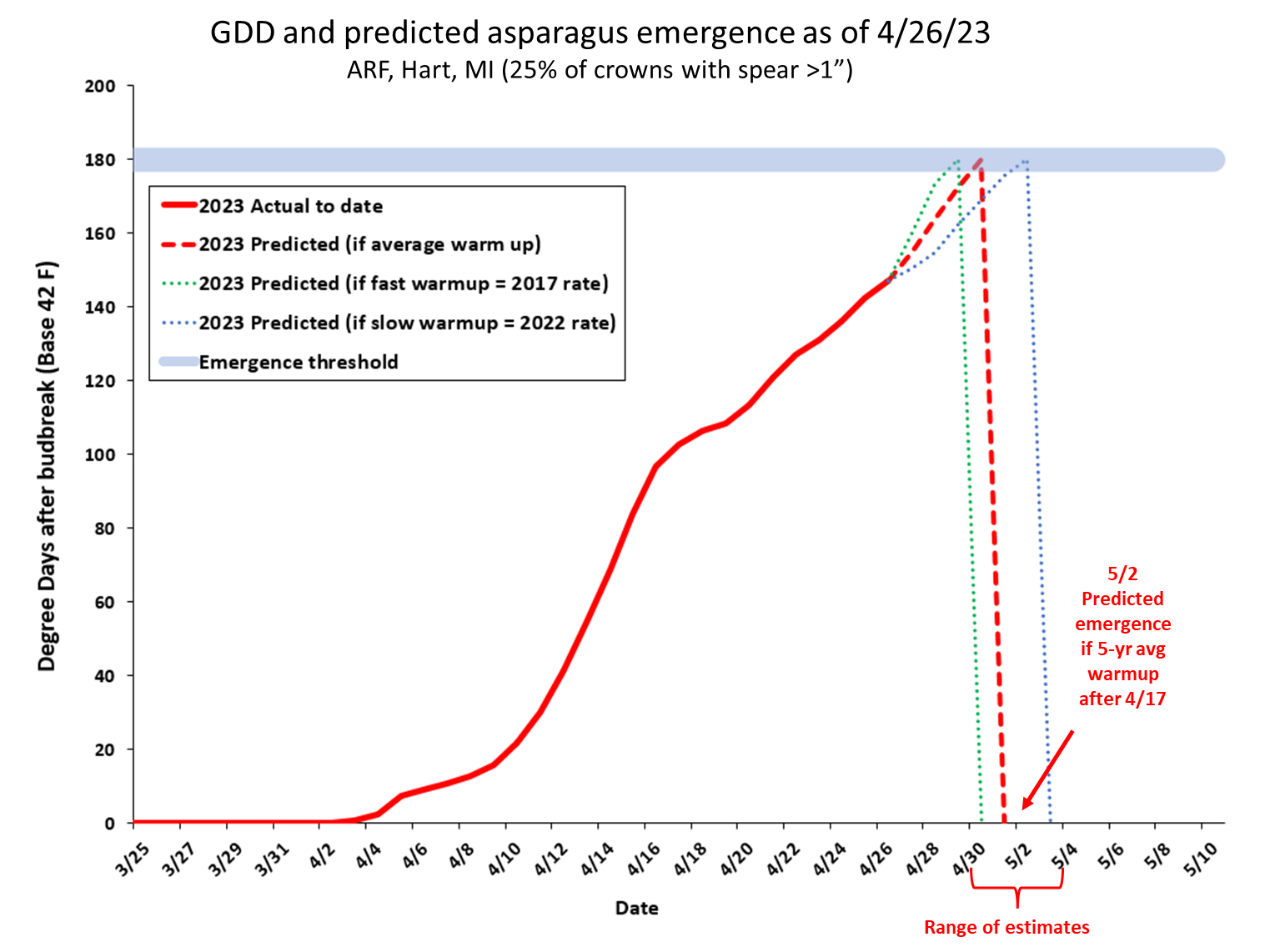
White cutworm is the first asparagus pest out of the gate. This pest overwinters as a caterpillar and is ready to go once it warms. It climbs spears at night to “nick the tips,” so watch for this type of damage. If you see this damage, dig down in the soil around the base of plants to look for caterpillars, which hideout in the duff during the day. Mowers and carts can also nick spears. This spotty pest can be controlled with permethrin (one-day preharvest interval). Learn more about cutworms.

Where are asparagus beetles? Last fall, beetles sought out old asparagus stalks, dead leaves and fieldside habitats like forest; these hidey holes help them survive freezing temperatures. Right now, they are hiding out waiting for warmer temperatures and food (asparagus). Zsofia Szendrei’s lab is working with growers to see if aggressively busting up stubble can eliminate at least one of these hidey holes. The goal is to break up stubble left by the first mower pass, as dried asparagus stems will hollow out to form tubes that beetles can hide in the fall. We’ll see what happens!
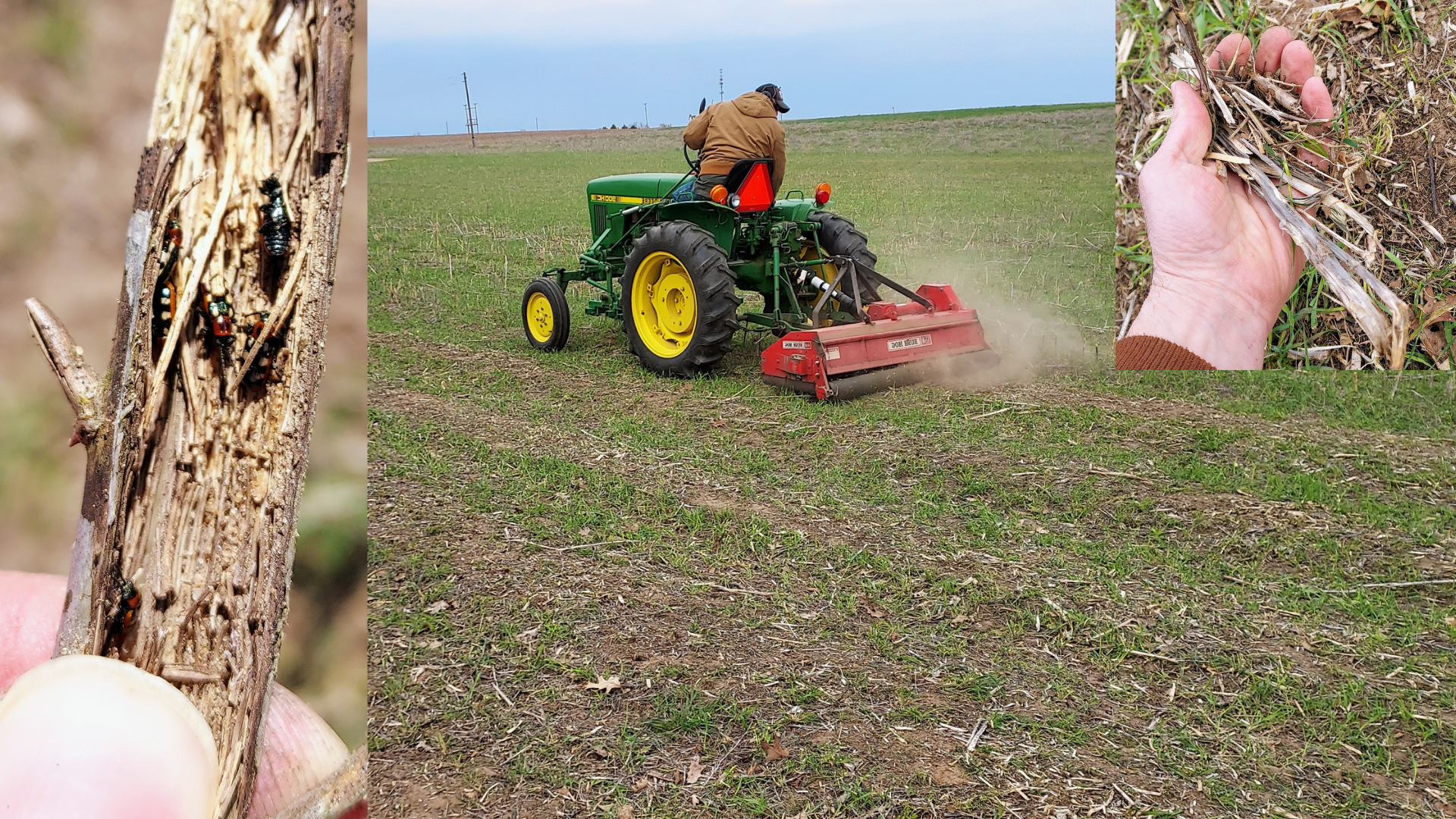
Celery
Celery has been out under frost cloth, with open field plantings going in last week. Note, Zidua is one newer herbicide with preemergence activity against a variety of weeds, including smartweed.
Cole crops and leafy greens
Cabbage and other brassicas and freeze-tolerant leafy greens have been planted since the beginning of April in the southern-tier counties of Michigan. Hoophouse produced greens, including spinach, lettuce and chard have been going to market in some scenarios.
The cabbage maggot model is up and running on Enviroweather, take a peek at its new look. Eggs were detected last week and again this week in west central Michigan at locations where brassicas had been planted last summer/fall. Emergence from overwintering has just begun in southeast Michigan.
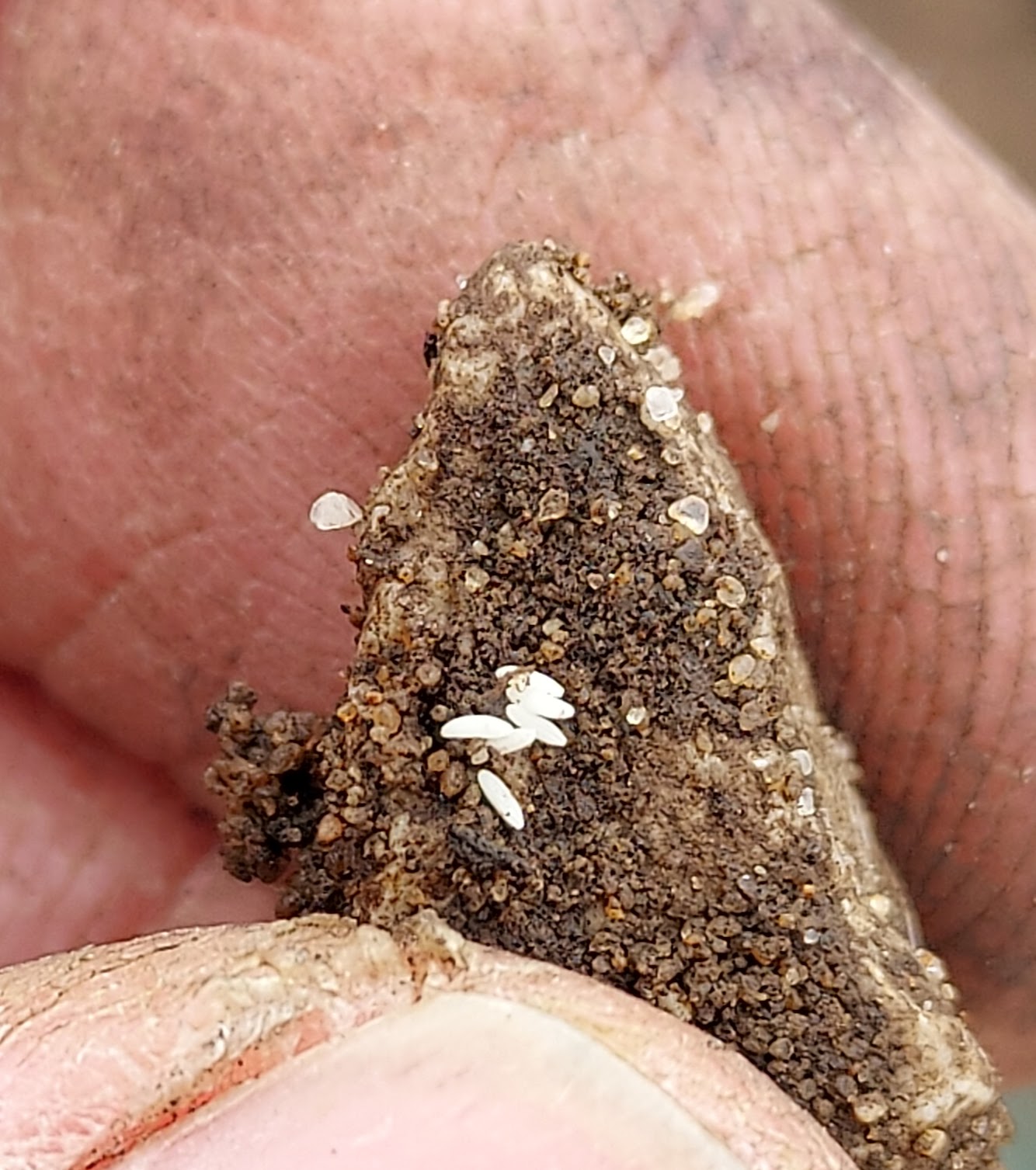
For transplanted brassicas, tray drenches of Verimark have consistently provided protection against cabbage maggot. They also provide early protection against caterpillars and flea beetles. Tray drenches are to be made no sooner than 72 hours before transplanting. Verimark is labeled for in-furrow application in direct-sown brassicas like turnips and radishes, though efficacy has been variable across trials. Concentrating Verimark in the furrow is likely important; e.g., applying it as a liquid stream vs. a band with a flat fan. This ensures a high concentration is present for developing roots to take up. The product is systemic, with no contact activity, so it needs to be in the root tissue when maggots take their first bite.
Diazinon is also labeled for radishes and rutabagas only. Row cover is highly effective as it excludes flies, keeping them from laying eggs on plants. Just make sure the ground did not have brassicas last summer/fall, otherwise there may be overwintering flies that emerge under the cover. Special purpose insect netting may allow for more air movement and be more durable than frost cloth, although both can work. Learn more about cabbage maggot control.
Cucurbits/pickles
Transplants are being started. Planting melons in the field usually happens in mid-May (after Mother’s day) in southeast Michigan to minimize risk of late frost damage. Further north, protection with fabric and plastic row covers or plant covers is a common practice to protect and advance plant growth.
Seedless watermelon seeds need babying to get good germination! Basically, it is important to plant seeds into warm, moist–but not too wet–coarse media and let them germinate at around 85 F for 48 hours, just long enough for radicles (baby roots) but not hypocotyls (baby stems) to emerge. Germination chambers are an ideal way to accomplish this, and can come in all shapes and sizes, from low tech to high tech. Check out this pro-tip presentation on seedless watermelon transplant production guidelines by Hassell and Schulteis from Clemson University. A must-read if you grow seedless watermelon transplants.
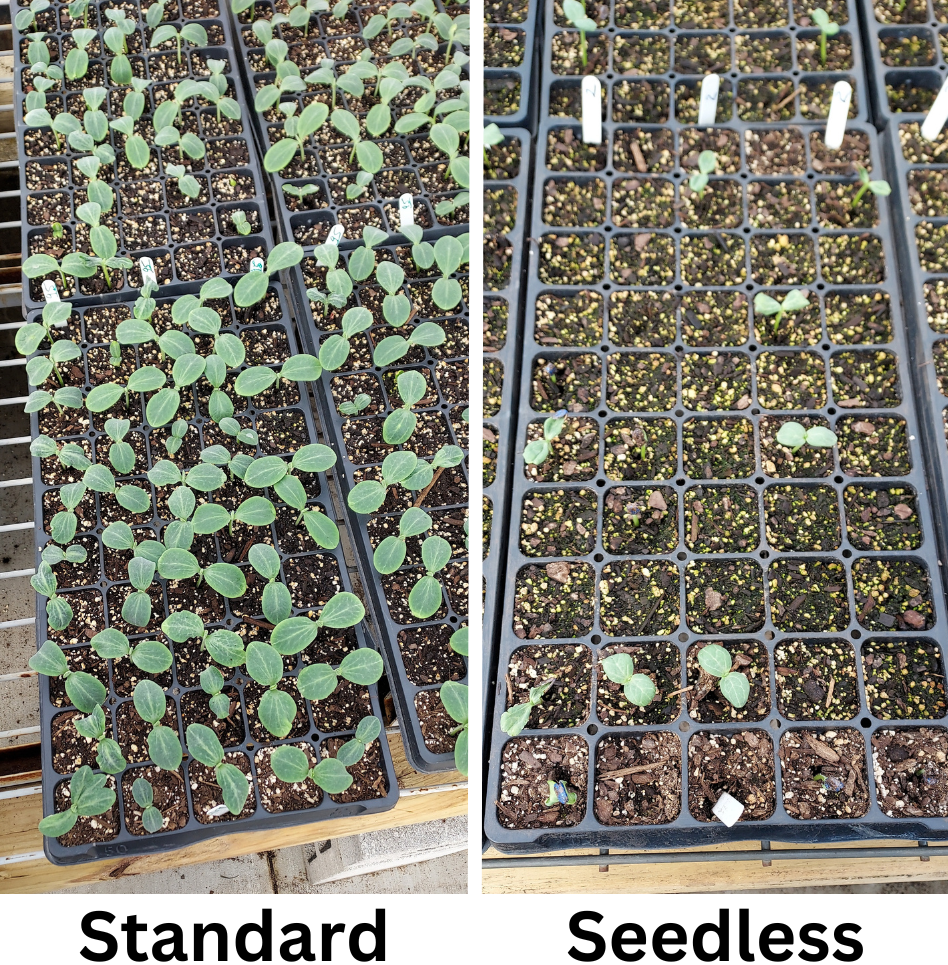
Fruiting vegetables
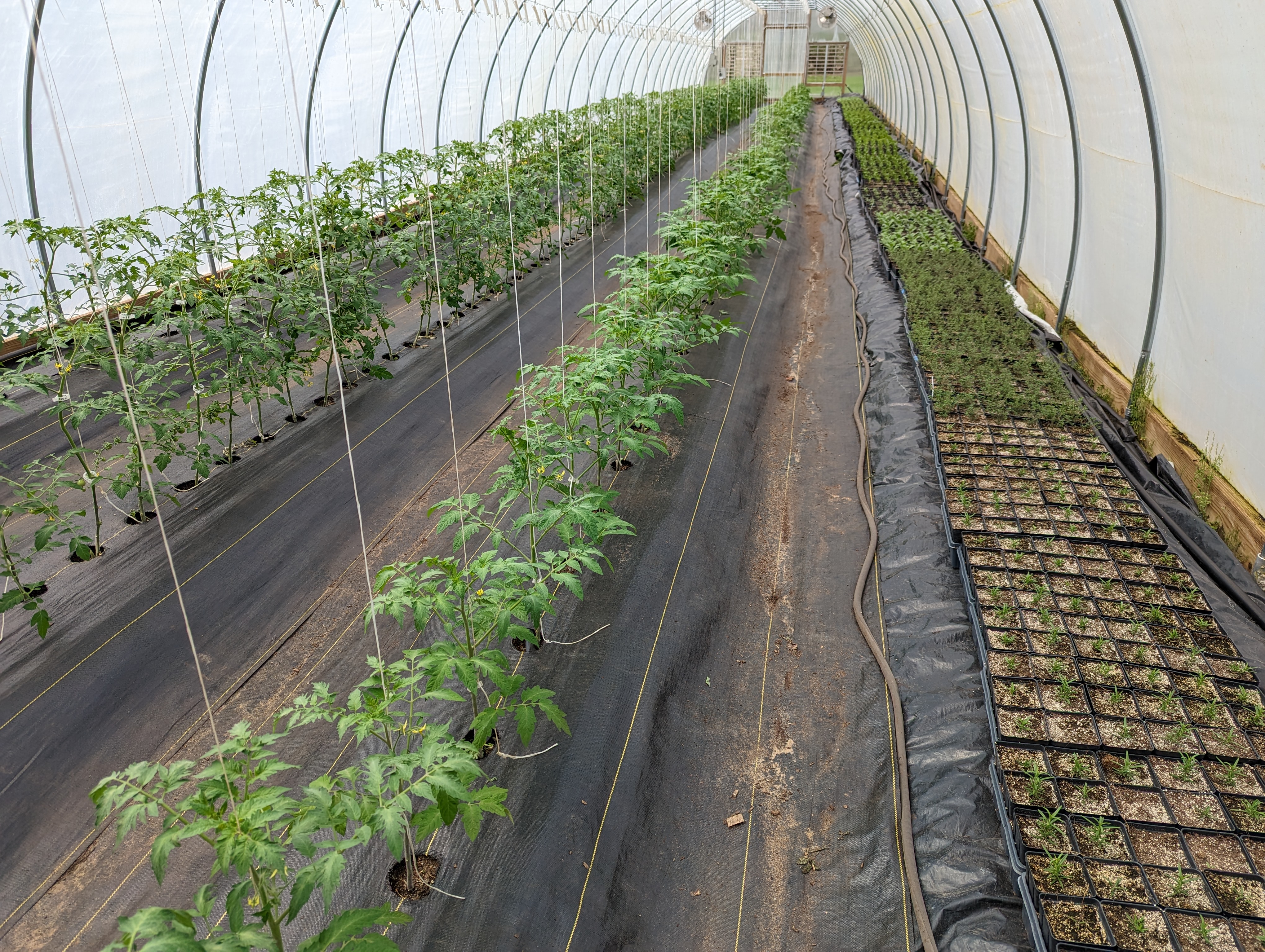
Transplants are in and hoophouse tomato crops are well underway with fruit set. In southwest Michigan, some growers are fumigating while laying plastic for their fruiting vegetable plantings.
Potatoes
Planting has been underway on some farms in southwest Michigan. Planting has been happening in southeast Michigan since the beginning of April.
Onions and carrots
Seeding in Lapeer County has been underway and had mostly wrapped up in west central Michigan by last week. As of last Friday, onions had sprouted but were just barely peeking out. Warm weather will speed emergence and growth. Parsnips and carrots have been seeded over the last few weeks in southeast and west central Michigan.
Early-season weed control is important for slow emerging crops like carrots and onions. For onions, Goaltender can be applied at the one-leaf stage to help burn down small weeds and provide residual activity. This use is allowed in Michigan via a special local needs label.
Sweet corn
Some seeding has occurred in east Michigan. In southeast Michigan, most farms are planting sweet corn around the beginning of May. A question that has been raised is, “Will my seed rot or freeze with this weather?” Planting sweet corn into cold soils can lead to delayed germination and excess moisture can lead to seed rot or damping-off diseases on the seedling. Nighttime air temperatures below freezing will generally not freeze seed that is planted, but low and long enough air temperatures can lower soil temperatures below freezing. Dry frozen seed is not a concern, but freezing soil temperatures can reduce stands if the seed has already imbibed moisture. Thankfully, most of the Lower Peninsula has not experienced freezing temperatures below 2 inches since March. This article “Seed Rot and Damping-Off” from University of California IPM details cultural practices and seed treatments useful for preventing sweet corn seed damage in cold wet soils. “Imbibitional chilling or cold injury” from Iowa State explains more about imbibitional chilling.
Strawberries (shared from the southwest Michigan fruit report)
Strawberries have greened up and new leaves are starting to emerge from the crown. Early sites where strawberries are being grown on plastic mulch are more advanced. Some blooms have been seen in those situations. With the cool weather expected this next week, floating row covers or other protection may be needed if frost conditions develop. Growers are looking at early season herbicides to control overwintering weeds. When selecting an herbicide, check the pre-harvest interval (PHI). We are getting to the part of spring where some herbicide PHIs are cutting it close to predicted harvest dates.
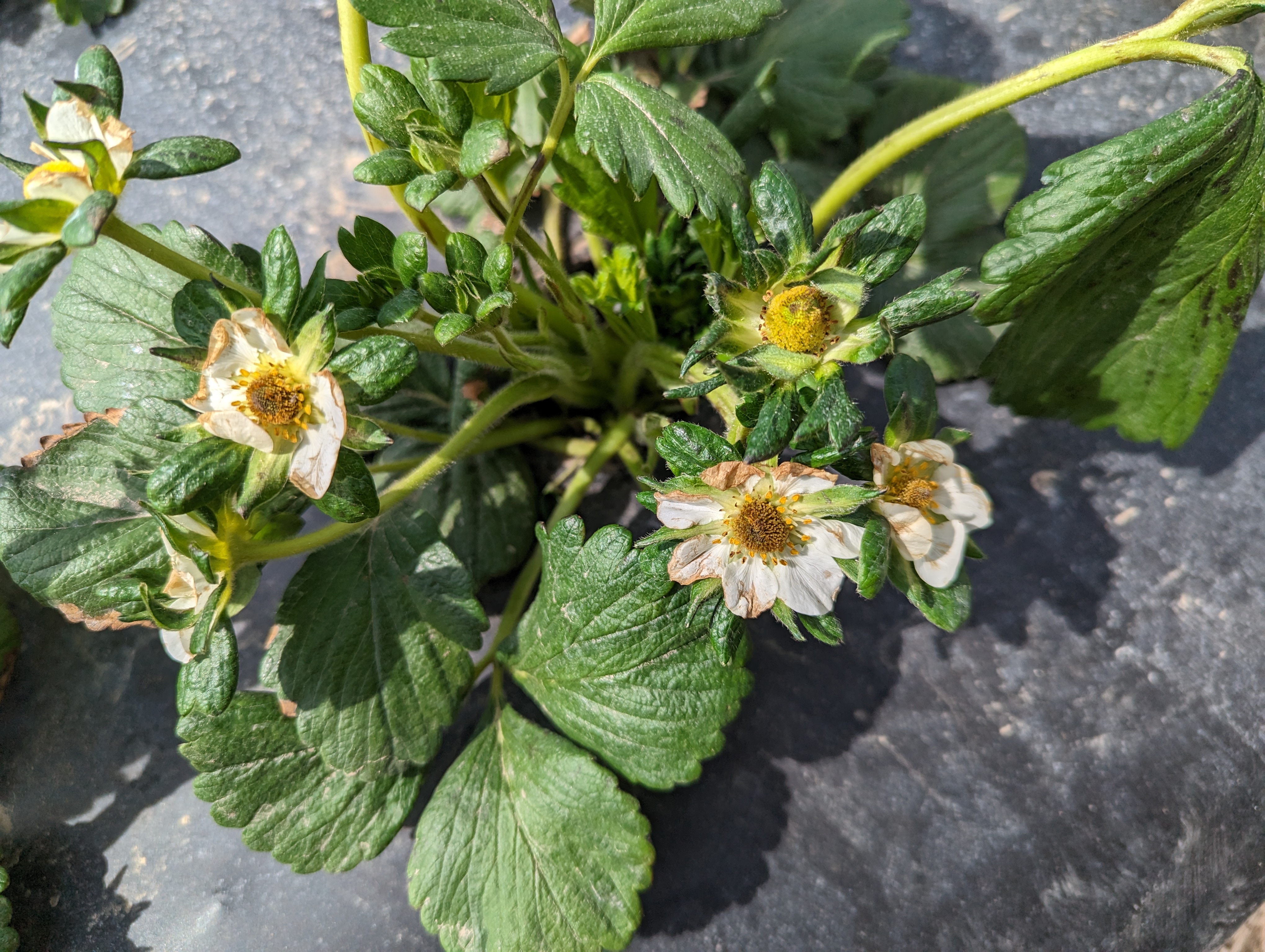
This work is supported by the Crop Protection and Pest Management Program [grant no 2021-70006-35450] from the USDA National Institute of Food and Agriculture. Any opinions, findings, conclusions, or recommendations expressed in this publication are those of the author(s) and do not necessarily reflect the view of the U.S. Department of Agriculture.



 Print
Print Email
Email

